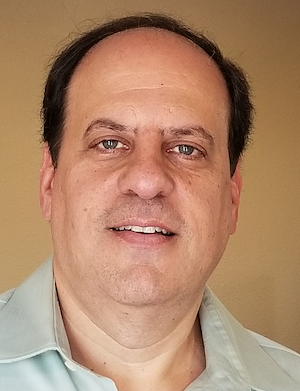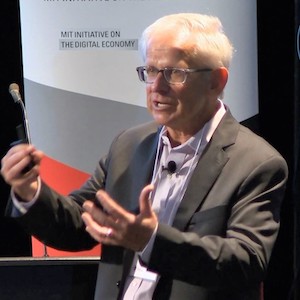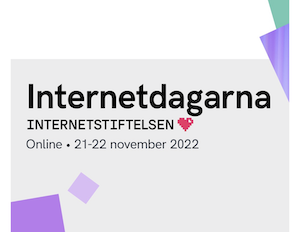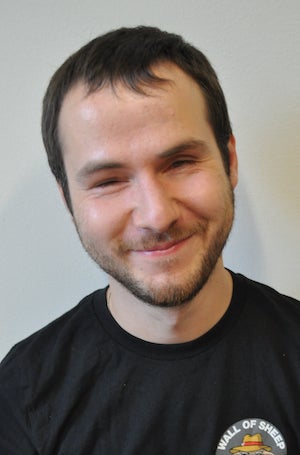 In August 2022 the Office of the National Coordinator for Health Information Technology (ONC) launched the 2022 Public Health Data Systems Task Force as a subcommittee of the Health Information Technology Advisory Committee (HITAC). The task force will meet through the beginning of November to present recommendations continuing and building upon the work of the 2021 task force. Members of the task force include individuals from various levels of government, relevant public health associations, and industry partners. Specifically, the task force is focused on the certification criteria for EHR products certified under the ONC Health IT Certification Program that cover transmission of data from EHRs to public health in these domains...
In August 2022 the Office of the National Coordinator for Health Information Technology (ONC) launched the 2022 Public Health Data Systems Task Force as a subcommittee of the Health Information Technology Advisory Committee (HITAC). The task force will meet through the beginning of November to present recommendations continuing and building upon the work of the 2021 task force. Members of the task force include individuals from various levels of government, relevant public health associations, and industry partners. Specifically, the task force is focused on the certification criteria for EHR products certified under the ONC Health IT Certification Program that cover transmission of data from EHRs to public health in these domains...
Draft TEFCA Facilitated FHIR Implementation Guide: A Public Health Perspective
By Noam H. Arzt, Ph.D. | November 3, 2022
 On October 7, 2022, the Trusted Exchange Framework and Common Agreement (TEFCA) project released a Draft TEFCA Facilitated FHIR Implementation Guide. As described in an earlier post, the project released a specific plan for integrating HL7 Fast Health Information Resources (FHIR) into the architecture that was defined explicitly in a new Roadmap for later implementation. This draft implementation guide (IG) provides the initial proposed details for this functionality. TEFCA only poses technical requirements on its direct participants, the Qualified Health Information Networks, or QHINs, but they are not the actual sources nor destinations of the data. The actual “FHIR details” are sketchy in this IG; maybe that is by design. It seems to specify just what the QHIN needs to know to do patient discovery and move the query and response around rather than any specifics on where a query originates nor where the response goes, let alone what data is contained.
On October 7, 2022, the Trusted Exchange Framework and Common Agreement (TEFCA) project released a Draft TEFCA Facilitated FHIR Implementation Guide. As described in an earlier post, the project released a specific plan for integrating HL7 Fast Health Information Resources (FHIR) into the architecture that was defined explicitly in a new Roadmap for later implementation. This draft implementation guide (IG) provides the initial proposed details for this functionality. TEFCA only poses technical requirements on its direct participants, the Qualified Health Information Networks, or QHINs, but they are not the actual sources nor destinations of the data. The actual “FHIR details” are sketchy in this IG; maybe that is by design. It seems to specify just what the QHIN needs to know to do patient discovery and move the query and response around rather than any specifics on where a query originates nor where the response goes, let alone what data is contained.
- Login to post comments
The Missing Ingredient in Today's Patient Portals: Network Effects (Part 4)
By Vince Kuraitis, and Jody Ranck | October 23, 2022
 As described in the first three posts in this series, today’s patient portals are inherently flawed and doomed to mediocrity. The result is that today’s patient portals cannot achieve a critical mass of adoption and utilization, and therefore portals can’t achieve network effects. In this post, we will: Summarize key points from the first three posts in this series; Explain how today’s patient portals miss out on three types of network effects; Explain the implications: why tomorrow’s portals must be reconfigured to achieve network effects
As described in the first three posts in this series, today’s patient portals are inherently flawed and doomed to mediocrity. The result is that today’s patient portals cannot achieve a critical mass of adoption and utilization, and therefore portals can’t achieve network effects. In this post, we will: Summarize key points from the first three posts in this series; Explain how today’s patient portals miss out on three types of network effects; Explain the implications: why tomorrow’s portals must be reconfigured to achieve network effects
- Login to post comments
2022 HL7 Working Group Meeting Continues to Advance a Public Health Agenda
By Daryl Chertcoff | October 7, 2022
 The HLN Consulting team attended the HL7 36th Annual Plenary & Working Group Meeting (WGM) held in Baltimore, MD, September 17 – 23, 2022. More than 500 attendees, representing all aspects of the industry, were a part of the WGM in-person meeting after 2 years of virtual meetings. The seven day event started on Saturday with a weekend connectathon. This meeting offered an opportunity for attendees to come together and collaborate. It was a valuable meeting especially for people involved in standards development around healthcare. Read More »
The HLN Consulting team attended the HL7 36th Annual Plenary & Working Group Meeting (WGM) held in Baltimore, MD, September 17 – 23, 2022. More than 500 attendees, representing all aspects of the industry, were a part of the WGM in-person meeting after 2 years of virtual meetings. The seven day event started on Saturday with a weekend connectathon. This meeting offered an opportunity for attendees to come together and collaborate. It was a valuable meeting especially for people involved in standards development around healthcare. Read More »
- Login to post comments
Open Source as Sustainable Digital Infrastructure - OpenForum Europe
OpenForum Europe (OFE), together with the Swedish Public Sector Network Open Source and Data, are organizing a track on Cybersecurity, sustainability and Digital Sovereignty as part of the Internet Days in Stockholm, Sweden. Open source software is a critical and extensive part of our common digital infrastructure. It presents both opportunities and risks. Opportunities such as enhanced interoperability of infrastructure and services within and across borders, as well as reducing dependencies and lock-in to individual vendors and system solutions. The risks stem from sustainability issues and include the fact that many open source applications are maintained by volunteers and there is a general under-investment in maintenance.

This in a rapidly changing geopolitical and digital environment, where vulnerabilities, introduced knowingly or unknowingly, are increasingly at risk of being exploited by malicious third parties with potentially major consequences. As the public sector intends to reuse more of each other’s digital infrastructure, there is a growing need to ensure that what we do is secure. Therefore, this thematic track aims to show the extent of open source software in our own and shared digital infrastructure, and its importance for our digital sovereignty and cybersecurity.
- Login to post comments
Build An Open Source Project Using This Essential Advice
By Bolaji Ayodeji | September 28, 2022
 Open source is a flourishing and beneficial ecosystem that publicly solves problems in communities and industries using software developed through a decentralized model and community contributions. Over the years, this ecosystem has grown in number and strength among hobbyists and professionals alike. It's mainstream now—even proprietary companies use open source to build software. With the ecosystem booming, many developers want to get in and build new open source projects. The question is: How do you achieve that successfully? This article will demystify the lifecycle and structure of open source projects. I want to give you an overview of what goes on inside an open source project and show you how to build a successful and sustainable project based on my personal experience.
Open source is a flourishing and beneficial ecosystem that publicly solves problems in communities and industries using software developed through a decentralized model and community contributions. Over the years, this ecosystem has grown in number and strength among hobbyists and professionals alike. It's mainstream now—even proprietary companies use open source to build software. With the ecosystem booming, many developers want to get in and build new open source projects. The question is: How do you achieve that successfully? This article will demystify the lifecycle and structure of open source projects. I want to give you an overview of what goes on inside an open source project and show you how to build a successful and sustainable project based on my personal experience.
- Login to post comments
OpenSSF: On A Mission To Improve Security Of Open Source Software
By Gaurav Kamathe | September 26, 2022
 Open source software (OSS), once a niche segment of the development landscape, is now ubiquitous. This growth is fantastic for the open source community. However, as the usage of OSS increases, so do concerns about security. Especially in mission-critical applications— think medical devices, automobiles, space flight, and nuclear facilities—securing open source technology is of the utmost priority. No individual entity, whether developers, organizations, or governments, can single-handedly solve this problem. The best outcome is possible when all of them come together to collaborate. The Open Source Security Foundation (OpenSSF) formed to facilitate this collaboration.
Open source software (OSS), once a niche segment of the development landscape, is now ubiquitous. This growth is fantastic for the open source community. However, as the usage of OSS increases, so do concerns about security. Especially in mission-critical applications— think medical devices, automobiles, space flight, and nuclear facilities—securing open source technology is of the utmost priority. No individual entity, whether developers, organizations, or governments, can single-handedly solve this problem. The best outcome is possible when all of them come together to collaborate. The Open Source Security Foundation (OpenSSF) formed to facilitate this collaboration.
- Login to post comments
ONC Launches Public Health Data Systems Task Force
By Noam H. Arzt, Ph.D. | September 18, 2022
Remixing Linux For Blind And Visually Impaired Users
By Vojtech Polasek | September 13, 2022
 When I was around 5 years old, my father brought home our first computer. From that moment on, I knew I wanted to pursue a career in computers. I haven't stopped hanging around them since. During high school, when considering which specific area I wanted to focus on, I started experimenting with hacking, and that was the moment I decided to pursue a career as a security engineer. I'm now a software engineer on the security compliance team. I've been at Red Hat for over two years, and I work remotely in the Czech Republic. Outside of my day job, I play blind football, and I'm involved in various projects connecting visually impaired and sighted people together, including working in a small NGO that runs activities for blind and visually impaired people. I'm also working on an accessible Fedora project currently called Fegora, an unofficial Linux distribution aimed at visually impaired users.
When I was around 5 years old, my father brought home our first computer. From that moment on, I knew I wanted to pursue a career in computers. I haven't stopped hanging around them since. During high school, when considering which specific area I wanted to focus on, I started experimenting with hacking, and that was the moment I decided to pursue a career as a security engineer. I'm now a software engineer on the security compliance team. I've been at Red Hat for over two years, and I work remotely in the Czech Republic. Outside of my day job, I play blind football, and I'm involved in various projects connecting visually impaired and sighted people together, including working in a small NGO that runs activities for blind and visually impaired people. I'm also working on an accessible Fedora project currently called Fegora, an unofficial Linux distribution aimed at visually impaired users.
- Login to post comments
Today's Patient Portals CAN NOT Work: Friction ACROSS Portals (Part 3)
By Vince Kuraitis, and Jody Ranck | September 12, 2022

Friction across multiple patient portals dramatically limits their usefulness—there’s no practical way for patients OR providers to reconcile and integrate information and workflow. This is the third post in our series on patient portals. We’ve used platform terminology and concepts to explain why today’s patient portals are doomed to mediocrity. Let’s recap: The first post in this series introduced the platform terminology of single-homing vs.multihoming. Patients strongly would prefer to have as few portals as possible — ideally one, i.e., a single “home”. The second post described the difference between stand-alone value and network value. Today’s patient portals can provide some stand-alone value, but they provide minimal network value. In this post we’ll discuss the pitfalls of friction across multiple portals. Your mom having seven portals is more than just inconvenient—it’s dangerous.
- Login to post comments
Open Source Driving the European Digital Decade
There is already significant momentum behind open source as an important tool to drive innovation at scale in European digital policy. In addition to EU procurement rules being revised to adopt and pay for open source solutions there are increasingly initiatives to boost the Public Sector’s operational capacity to contribute to open source...For governments, open source solutions are delivering world class digital services that are not only meeting demands of Digital Sovereignty, but also create positive economic externalities for the country or region. In addition to these public sector policy efforts, from an industrial policy and geopolitical perspective, OSS is being discussed strategically by the European Commission and in the member state capitals. It is central to the conversations around competitiveness, increased digital competition, AI development and cybersecurity, to name a few...

- Login to post comments